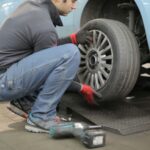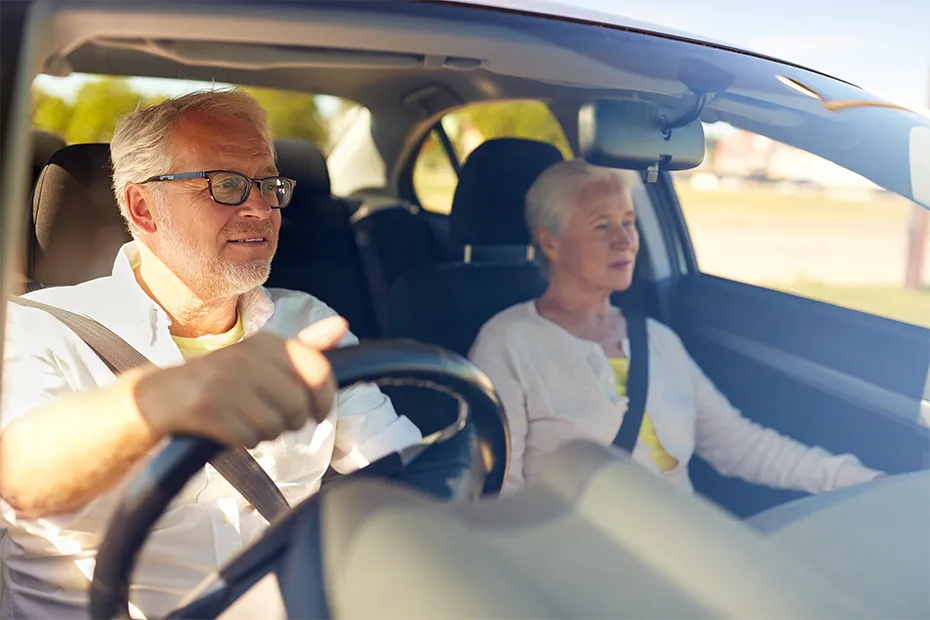As we age, our driving needs change. Ensuring that a car is equipped for senior-friendly driving not only enhances safety but also boosts comfort and confidence behind the wheel. Upgrading your vehicle to suit these needs can make a significant difference, prolonging independence while maintaining peace of mind. This guide walks you through all the considerations, modifications, and enhancements that can make driving safer and more enjoyable for seniors.
Assessing the Needs of Senior Drivers
Understanding the specific challenges senior drivers face is crucial when planning upgrades. Aging can lead to reduced mobility, slower reaction times, and diminished vision or hearing. Each of these factors can affect driving performance. Evaluating the current condition of the car and discussing concerns with the senior driver ensures that upgrades are tailored to individual needs. This personalized approach is essential for effective modifications.
Safety Features to Add or Upgrade
Advanced Driver Assistance Systems (ADAS)
Adding systems such as blind-spot detection, lane-keeping assist, automatic emergency braking, and adaptive cruise control significantly reduces risks on the road. These technologies can help compensate for slower reaction times and improve situational awareness.
Rearview Camera and Parking Sensors
Many accidents occur during parking or reversing. Installing a rearview camera and parking sensors provides better visibility and alerts the driver to obstacles.
Upgraded Lighting
Improved lighting is critical for seniors, especially for nighttime or bad-weather driving. LED or HID headlights provide brighter illumination, while adaptive headlights adjust their intensity and direction for better visibility. Fog lights are also a must for driving in adverse conditions.
Tire Pressure Monitoring System (TPMS)
Maintaining proper tire pressure ensures safer handling and better fuel efficiency. Many modern cars come with TPMS, but it can also be installed in older models.
Enhancing Comfort and Convenience
Ergonomic Adjustments
Comfortable seating is essential for senior drivers. Power-adjustable seats with lumbar support can reduce strain during long drives. Heated and ventilated seats improve comfort in extreme weather, and memory settings allow easy adjustments for multiple drivers.
Improved Entry and Exit
Getting in and out of a car can be challenging for seniors. Adding grab handles, assist bars, and swivel seat cushions can make the process easier. For higher vehicles, running boards provide a practical solution.
Steering Wheel Modifications
A thicker steering wheel cover improves grip, while a heated steering wheel is beneficial in colder climates. Both upgrades enhance comfort and control.
Climate Control Upgrades
Dual-zone climate control systems allow for personalized temperature settings, making long drives more pleasant. Enhanced air filtration systems improve air quality inside the vehicle, reducing allergens and pollutants.
Addressing Vision and Hearing Challenges

Anti-Glare Solutions
Glare from sunlight or headlights can strain senior drivers. Tinted windows with UV protection and polarized sun visors help reduce glare, improving visibility.
Simplified Instrument Panels
High-contrast displays with large, easy-to-read fonts make instrument panels more accessible. Voice-guided navigation systems minimize the need for visual attention, reducing distractions.
Auditory Alerts and Systems
Clear auditory alerts for parking sensors, turn signals, and safety warnings ensure that seniors don’t miss critical notifications. Bluetooth-enabled systems can connect to hearing aids for enhanced sound clarity.
Making Controls Senior-Friendly
Simplified Dashboard Layout
A clutter-free dashboard with intuitive controls makes driving less stressful. Modern touchscreen interfaces with large icons are particularly useful for seniors.
Accessible Controls
Upgrades such as power-operated pedals and easily accessible gear shifters make driving more manageable. These features cater to seniors with reduced mobility or strength.
Voice-Activated Features
Voice-activated systems for navigation, phone calls, and entertainment minimize the need for manual inputs, allowing seniors to focus on the road.
Technology Upgrades for Improved Driving
Navigation Systems
Senior-friendly GPS devices feature larger screens and clear audio instructions. Real-time traffic updates and route suggestions enhance convenience.
Emergency Response Systems
Cars equipped with SOS buttons or subscription services like OnStar offer quick access to emergency help, adding a layer of security for senior drivers.
Mobile App Integration
Apps that locate parked cars or send maintenance reminders simplify car ownership and improve efficiency. These tools can be particularly helpful for forgetful drivers.
Accessibility Upgrades
Hand Controls for Mobility-Impaired Drivers
For seniors with limited leg mobility, hand-operated brake and acceleration systems offer an alternative. These controls can be customized for individual needs.
Wheelchair Accessibility
For seniors using wheelchairs, installing ramps or hoists is essential. Larger vehicles like vans and SUVs can be modified with rear or side-entry conversions for easier access.
Improving Road Awareness and Focus
Dash Cams for Safety Monitoring
Installing front and rear dash cams provides an additional layer of safety, recording trips and incidents for insurance or legal purposes.
Fatigue Monitoring Systems
Modern systems alert drivers when signs of fatigue, such as slow reaction times or drifting, are detected. These alarms or vibrations can prevent accidents.
Driver Wellness Features
Some advanced cars include wellness monitors that track heart rate or detect signs of drowsiness, ensuring drivers stay alert and healthy.
Budgeting and Prioritizing Upgrades
Cost-Benefit Analysis
Not all upgrades need to be done at once. Prioritize safety features first, followed by comfort and convenience modifications. Evaluate costs and benefits for each enhancement.
DIY vs. Professional Installation
Some upgrades, such as seat cushions or steering wheel covers, can be installed by the owner. However, complex features like ADAS or wheelchair accessibility should be handled by certified professionals.
Financial Assistance and Resources
Look for insurance discounts for safety upgrades or government programs that provide financial aid for senior-friendly vehicle modifications.
Legal and Insurance Considerations
State Regulations on Modifications
Ensure all modifications comply with local laws. For example, extreme window tinting may not be allowed in some states.
Notifying Insurance Providers
Inform your insurance company of any upgrades. Many providers offer discounts for safety features, reducing overall costs.
Final Checklist for a Senior-Friendly Car
Before hitting the road, test all modifications with the senior driver. Ensure safety features are functioning correctly and that comfort adjustments meet their needs. Regularly evaluate and adjust upgrades as required to keep the car senior-friendly.
Conclusion
Upgrading a car for senior-friendly driving is a practical way to ensure safety, comfort, and independence. By implementing these modifications, seniors can enjoy a more confident and enjoyable driving experience, enhancing their quality of life.

 Why Mobile Tyre Replacement is the Future of Car Maintenance
Why Mobile Tyre Replacement is the Future of Car Maintenance  The Real Cost of Anime Car Wraps: What You Need to Know Before Going Full Itasha
The Real Cost of Anime Car Wraps: What You Need to Know Before Going Full Itasha  The Importance of Quiet Generators for Peaceful Sleep: Featuring the Jackery Solar Generator 2000 Plus
The Importance of Quiet Generators for Peaceful Sleep: Featuring the Jackery Solar Generator 2000 Plus  Why WEX Motorpass Is the Smart Choice for Business Fuel Management
Why WEX Motorpass Is the Smart Choice for Business Fuel Management  Top Choice for 4WD and Overlanding Rentals in Bozeman
Top Choice for 4WD and Overlanding Rentals in Bozeman  How Car Window Tinting Enhances Privacy and Protection on the Road
How Car Window Tinting Enhances Privacy and Protection on the Road  Certified Preowned Cars: Are They Worth It?
Certified Preowned Cars: Are They Worth It?  Apps That Help Diagnose Car Problems Like a Mechanic
Apps That Help Diagnose Car Problems Like a Mechanic  How to Track Fuel Efficiency and Expenses Using Smart Apps
How to Track Fuel Efficiency and Expenses Using Smart Apps 